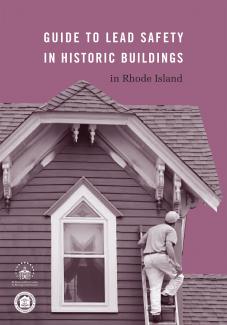Lead Safety and Historic Buildings

The Guide to Lead Safety in Historic Buildings in Rhode Island is a one-stop resource for all Rhode Islanders who want to ensure the safety, character, and value of their historic buildings. This publication compiles steps to follow in planning a renovation project, resources on lead safety and historic buildings, contact information for state and local agencies, a glossary of terms, state laws and regulations, and funding sources.
Owners of historic buildings need to know how to handle lead paint before they begin work on their buildings. Most buildings built before 1978 contain lead paint. Lead dust and chips from deteriorated or disturbed paint can create serious health hazards if not handled properly. Lead in water, dust, soil, and paint is hazardous to adults and children, particularly pregnant women and children under six years of age.
Historic buildings can be made lead safe while preserving their significant architectural features and finishes. With simple maintenance, inexpensive materials, and lead-safe renovation techniques, you can ensure the safety, character, and value of your building. You may qualify for special incentives like tax credits, loans, and grants. Use lead safe work practices when you work on your building. It protects your investment, your tenants, and your family. And it's the law.